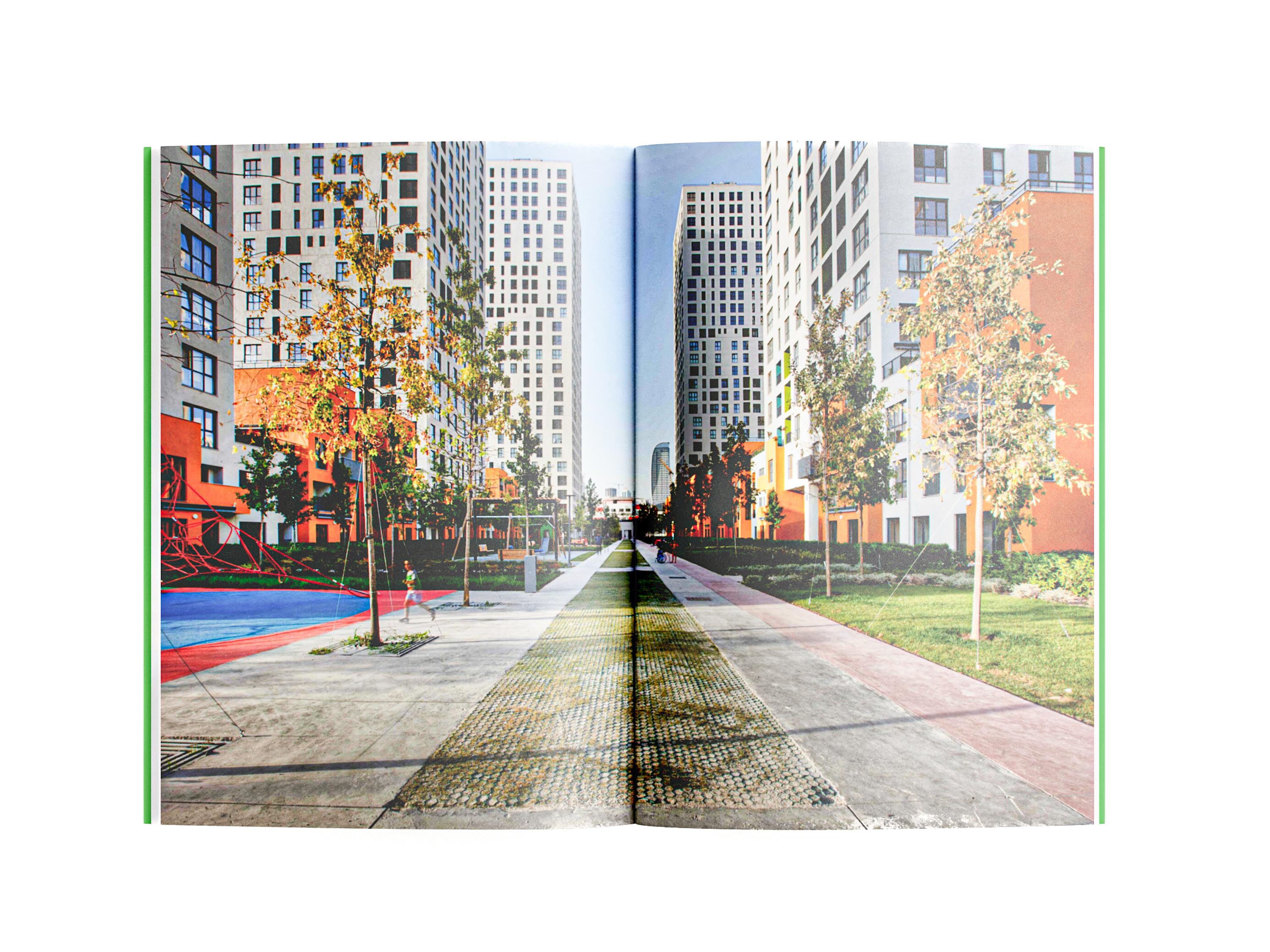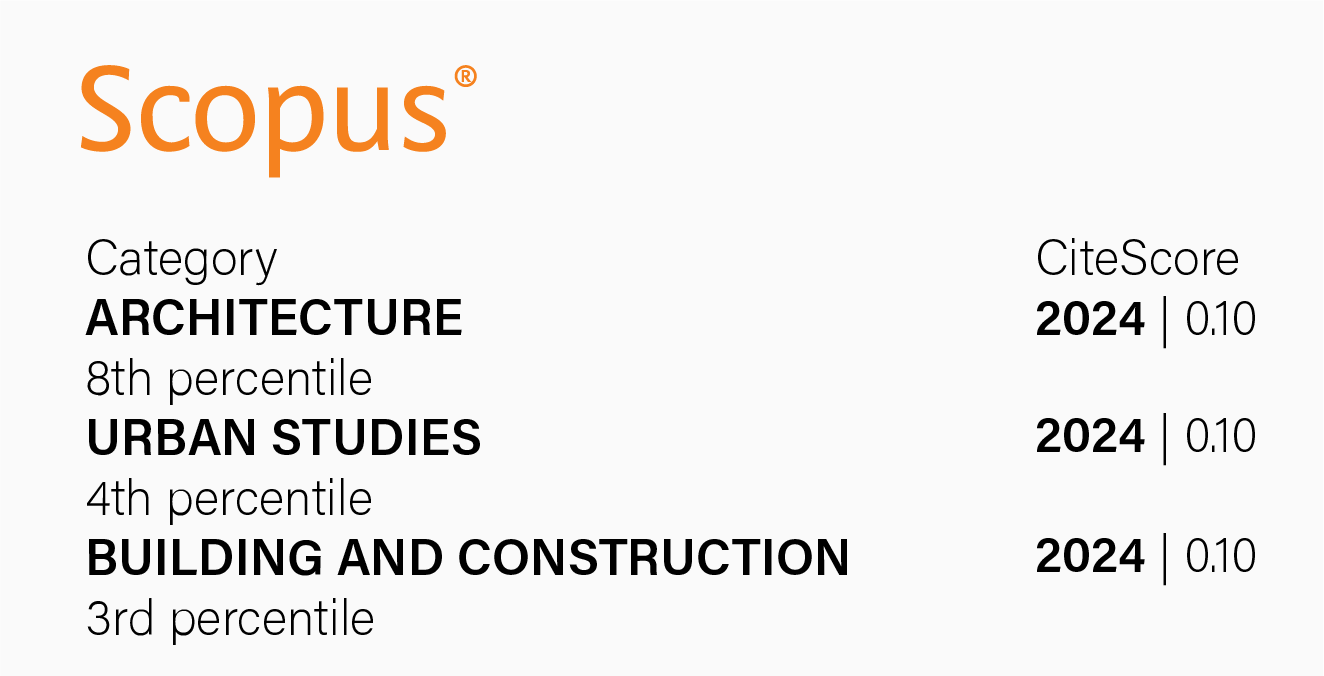The role of LEED certificate in house purchasing decision: Hep Istanbul Housing Project
DOI:
https://doi.org/10.18537/est.v014.n028.a07Keywords:
housing, purchasing behavior, sustainability, green building, LEED certificateAbstract
Purchasing a home is one of the most significant decisions in life. Research shows that consumers typically consider price, location, layout, durability, and aesthetics when buying a home. However, with the increasing impact of climate change, sustainability, energy consumption, and carbon emissions are becoming important factors. This study examines how the sustainability features of the HEP Istanbul Housing Project, which holds LEED Gold and Silver certifications, grounded in LEED criteria and informed by a thorough review of relevant literatura, was administered to 70 individuals who had purchased homes from the project. Data were analyzed using IBM SPSS Statistics 22. The findings indicate that although consumers were not highly familiar with LEED certification, environmental responsibility played a role in their decisions, highlighting a growing awareness of sustainability in home purchases.
Downloads
References
Ali, H. H., & Al Nsairat, S. F. (2009). Developing a green building assessment tool for developing countries – Case of Jordan. Building and Environment, 44(5), 1053-1064. https://doi.org/10.1016/j.buildenv.2008.07.015
Barber, N. A., Bishop, M., & Gruen, T. (2014). Who pays more (or less) for pro-environmental consumer goods? Using the auction method to assess actual willingness-to-pay. Journal of Environmental Psychology, 40, 218-227. https://doi.org/10.1016/j.jenvp.2014.06.010
Blunt, A. & Dowling, R. (2006). Home. Routledge.
Boztepe, A. (2012). Green marketing and its impact on consumer buying behavior. European Journal of Economic & Political Studies, 5(1).
BRE. (2025). BREEAM communities technical manual. https://breeam.com/standards
Chan, E. H. W., Qian, Q. K., & Lam, P. T. I. (2009). The market for green building in developed Asian cities—the perspectives of building designers. Energy Policy, 37(8), 3061-3070. https://doi.org/10.1016/j.enpol.2009.03.057
Chia, J., Harun, A., Kassim, A. W. M., Martin, D., & Kepal, N. (2016). Understanding factors that influence house purchase intention among consumers in Kota Kinabalu: an application of buyer behavior model theory. Journal of Technology Management and Business, 3(2), https://penerbit.uthm.edu.my/ojs/index.php/jtmb/article/view/1466
Chuweni, N. N., Mohamed Saraf, M. H., Fauzi, N. S., & Ahmad Mohamed, N. (2024). Towards sustainable living: an investigation of the motivations behind green residential ownership in Malaysia. International Journal of Housing Markets and Analysis. https://doi.org/10.1108/IJHMA-06-2024-0087
CM Mimarlik (2023). Hep Istanbul. https://cmmimarlik.com.tr/en/project/tekfen-hep-istanbul/
Coolen, H. & Meesters, J. (2012). Editorial special issue: House, home and dwelling. Journal of Housing and the Built Environment, 27(1), 1–10. https://doi.org/10.1007/s10901-011-9247-4
Després, C. (1991). The meaning of home: Literature review and directions for future research. Journal of Architectural and Planning Research, 8(2), 96–115. https://www.jstor.org/stable/43029026
DGNB. (n.d.). DGNB’s sustainability approach. https://www.dgnb.de/en/sustainable-building/dgnbs-sustainability-approach
Do Paço, A., Alves, H., Shiel, C., & Filho, W. L. (2013). Development of a green consumer behaviour model. International Journal of Consumer Studies, 37(4), 414-421. https://doi.org/10.1111/ijcs.12009
Eichholtz, P., Kok, N., & Quigley, J.M. (2013). The economics of green building. Review of Economics and Statistics, 95(1), 50-63. https://doi.org/10.1162/REST_a_00291
Ferreira, A., Pinheiro, M. D., de Brito, J., & Mateus, R. (2023). A critical analysis of LEED, BREEAM and DGNB as sustainability assessment methods for retail buildings. Journal of Building Engineering, 66, 105825. https://doi.org/10.1016/j.jobe.2023.105825
Fuerst, F., & McAllister, P. (2011). Green noise or green value? Measuring the price effects of environmental certification in commercial buildings. Real Estate Economics, 39(1), 45-69. https://doi.org/10.1111/j.1540-6229.2010.00286.x
Huang, H. C., Lin, T. H., Lai, M. C., & Lin, T. L. (2014). Environmental consciousness and green customer behavior: An examination of motivation crowding effect. International journal of hospitality management, 40, 139-149. https://doi.org/10.1016/j.ijhm.2014.04.006
Jayantha, W. M., and Lau, & J. M. (2016). Buyers’ property asset purchase decisions: an empirical study on the high-end residential property market in Hong Kong. International Journal of Strategic Property Management, 20(1), 1-16. https://doi.org/10.3846/1648715X.2015.1105322
Juan, Y. K., Hsu, Y. H., & Xie, X. (2017). Identifying customer behavioral factors and price premiums of green building purchasing. Industrial Marketing Management, 64, 36-43. https://doi.org/10.1016/j.indmarman.2017.03.004
Kanchanapibul, M., Lacka, E., Wang, X., & Chan, H. K. (2014). An empirical investigation of green purchase behaviour among the young generation. Journal of cleaner production, 66, 528-536. https://doi.org/10.1016/j.jclepro.2013.10.062
Katcher-Dunne, A. E. (2016). The role of LEED certification in consumer major purchase decisions: a case study of the Chattanooga Volkswagen manufacturing facility. https://scholar.utc.edu/theses/491
Kumar, J., Rani, V., Rani, G., & Rani, M. (2024). Does individuals’ age matter? A comparative study of generation X and generation Y on green housing purchase intention. Property Management, 42 (4): 507–522. https://doi.org/10.1108/PM-08-2023-0081
Lin, P. C., & Huang, Y. H. (2012). The influence factors on choice behavior regarding green products based on the theory of consumption values. Journal of Cleaner production, 22(1), 11-18. https://doi.org/10.1016/j.jclepro.2011.10.002
Liobikienė, G., Mandravickaitė, J., & Bernatonienė, J. (2016). Theory of planned behavior approach to understand the green purchasing behavior in the EU: A cross-cultural study. Ecological Economics, 125, 38-46. https://doi.org/10.1016/j.ecolecon.2016.02.008
Mapp, C., Nobe, M. C., & Dunbar, B. (2011). The cost of LEED—An analysis of the construction costs of LEED and non-LEED buildings. Journal of Sustainable Real Estate, 3(1), 254-273. https://doi.org/10.1080/10835547.2011.12091824
Matisoff, D. C., Noonan, D. S., & Mazzolini, A. M. (2014). Performance or marketing benefits? The case of LEED certification. Environmental science & technology, 48(3), 2001-2007. https://doi.org/10.1021/es4042447
Newton, J. D., Tsarenko, Y., Ferraro, C., & Sands, S. (2015). Environmental concern and environmental purchase intentions: The mediating role of learning strategy. Journal of Business Research, 68(9), 1974-1981. https://doi.org/10.1016/j.jbusres.2015.01.007
Nik Abdul Rashid, N. R., & Shaharudin, M. R. (2017). Customer’s purchase intention for a green home. International Journal of Procurement Management, 10(5), 581-599. https://doi.org/10.1504/IJPM.2017.086402
Oran, S. G. (2023). The role of leed certificatein consumer house purchasing decision: Hep Istanbul Housing Project [Unpublished master’s thesis]. Istanbul Arel University. https://tez.yok.gov.tr/UlusalTezMerkezi TezGoster?key=cr4SkWLaRMhkDRBjqthpscESMzxrWB29DmLlHUuc4NfVqvq4j0FvtgnvdQKVxYZZ
Patel, C., & Chugan, P. K. (2016). Green marketing: a study of consumer purchase behaviour for green homes. New age ecosystem for empowering trade, industry and society, Eds., Pawan K. Chugan, Deepak Srivastava, Nikunj Patel and Nirmal C. Soni, Excel India Publishers, New Delhi, for Institute of Management, Nirma University, Ahmedabad India, 254-268. http://ssrn.com/abstract=2746542
Ramayah, T., Lee, J. W. C., & Mohamad, O. (2010). Green product purchase intention: Some insights from a developing country. Resources, conservation and recycling, 54(12), 1419-1427. https://doi.org/10.1016/j.resconrec.2010.06.007
Rapoport, A. (1995). A critical look at the concept home. In Benjamin, D. N. and Stea, D. (Eds.), The home: Words, interpretations, meanings, and environments (pp. 25–53). Avebury.
Rapoport, A. (2000). Theory, culture and housing. Housing, theory and society, 17(4), 145-165. https://doi.org/10.1080/140360900300108573
Ritter, Á. M., Borchardt, M., Vaccaro, G. L., Pereira, G. M., & Almeida, F. (2015). Motivations for promoting the consumption of green products in an emerging country: exploring attitudes of Brazilian consumers. Journal of Cleaner Production, 106, 507-520. https://doi.org/10.1016/j.jclepro.2014.11.066
Sailor, D. J. (2008). A green roof model for building energy simulation programs. Energy and Buildings, 40(8), 1466-1478. https://doi.org/10.1016/j.enbuild.2008.02.001
Sanei, M., Khodadad, M., & Reillo, F. C. (2022). Analyzing LEED scoring system based on the priorities in urban housing sustainability literature. Urbanism. Arhitectura. Constructii, 13(2), 151-164.
Scheuer, C., Keoleian, G. A., & Reppe, P. (2003). Life cycle energy and environmental performance of a new university building: Modeling challenges and design implications. Energy and Buildings, 35(10), 1049-1064. https://doi.org/10.1016/S0378-7788(03)00066-5
Schlueter, A., & Thesseling, F. (2009). Building information model based energy/exergy performance assessment in early design stages. Automation in construction, 18(2), 153-163. https://doi.org/10.1016/j.autcon.2008.07.003
Tatari, O., & Kucukvar, M. (2011). Cost premium prediction of certified green buildings: A neural network approach. Building and Environment, 46(5), 1081-1086. https://doi.org/10.1016/j.buildenv.2010.11.009
USGBC (United States Green Building Council). (2023). U.S. Green Building Council. https://www.usgbc.org
Wang, W., Zmeureanu, R., & Rivard, H. (2005). Applying multi-objective genetic algorithms in green building design optimization. Building and Environment, 40(11), 1512-1525. https://doi.org/10.1016/j.buildenv.2004.11.017
Zhao, H. H., Gao, Q., Wu, Y. P., Wang, Y., & Zhu, X. D. (2014). What affects green consumer behavior in China? A case study from Qingdao. Journal of Cleaner Production, 63, 143-151. https://doi.org/10.1016/j.jclepro.2013.05.021

Published
How to Cite
Issue
Section
License
Copyright (c) 2025 Estoa. Journal of the Faculty of Architecture and Urbanism

This work is licensed under a Creative Commons Attribution-NonCommercial-ShareAlike 4.0 International License.
The Journal declines any responsibility for possible conflicts derived from the authorship of the works that are published in it.
The University of Cuenca in Ecuador conserves the patrimonial rights (copyright) of the published works and will favor the reuse of the same ones, these can be: copy, use, diffuse, transmit and expose publicly.
Unless otherwise indicated, all contents of the electronic edition are distributed under a Creative Commons Attribution-NonCommercial-ShareAlike 4.0 International License.



